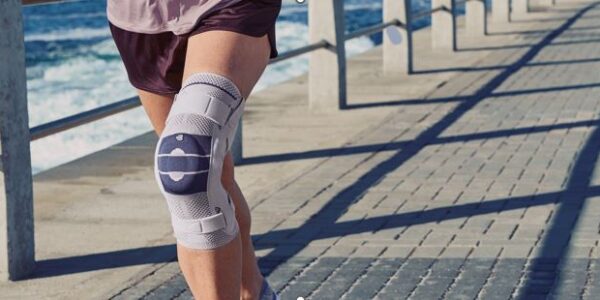
Knee injuries are among the most common issues athletes face across various sports. From running and basketball to soccer and weightlifting, the knee joint undergoes immense stress. Proper knee support gear plays a crucial role in protecting the knee, reducing pain, and enhancing athletic performance. This article delves into the essential information athletes need to know about knee support gear — including types, benefits, and how to choose the right one.
The knee is a complex joint composed of bones, ligaments, tendons, and cartilage. It bears a significant portion of body weight and absorbs impact during dynamic movements. Due to its pivotal role, the knee is susceptible to injuries such as sprains, strains, ligament tears, and cartilage damage.
Using knee support gear can provide stability, reduce stress on vulnerable areas, and prevent further injury. For athletes, especially those recovering from injury or with a history of knee problems, knee supports offer a layer of protection during training and competition.
There are several types of knee support gear designed for different purposes. Understanding the options helps athletes select the most appropriate gear for their needs.
Knee sleeves are made from elastic materials like neoprene and provide compression around the knee. They help improve blood circulation, reduce swelling, and provide mild support. Knee sleeves are ideal for athletes seeking joint warmth and general knee stability.
Knee braces offer varying levels of support, ranging from flexible braces that allow motion to rigid braces that limit movement. They are often used to support injured ligaments (e.g., ACL, MCL), prevent hyperextension, or stabilize the knee after surgery.
Knee straps are small bands worn below the kneecap. They provide targeted support to the patellar tendon and are commonly used to alleviate pain associated with conditions like patellar tendinitis or runner’s knee.
These braces stabilize the kneecap and prevent it from moving out of place. They are beneficial for athletes experiencing patellar tracking issues or dislocations.
Knee support gear can minimize the risk of injuries by stabilizing the joint and controlling excessive movement. This is particularly important in high-impact or pivoting sports like basketball, football, and skiing.
Compression and support reduce inflammation and relieve pain from existing conditions such as arthritis, tendinitis, or previous injuries.
Some athletes experience improved proprioception — the body’s awareness of joint position — when wearing knee supports, leading to better control and confidence during movements.
Post-injury or post-surgery, knee braces and sleeves help support healing tissues, reduce swelling, and enable earlier return to activity.
Selecting the appropriate knee support depends on individual needs, activity level, and any pre-existing knee conditions.
Identify if you need general support, injury prevention, pain relief, or post-injury stabilization. Consulting a healthcare professional can help determine the best option.
Different sports require different levels of support and mobility. For example, runners might benefit from knee sleeves or straps, while contact sports athletes might need more rigid braces.
Proper fit is critical to effectiveness. Knee support gear that is too tight can restrict blood flow, while loose gear won’t provide adequate support. Look for adjustable options and try them on if possible.
Durable, breathable materials like neoprene with moisture-wicking properties enhance comfort during extended wear.
Use knee supports during sports or workouts that put stress on your knees, especially if you have prior injuries or pain.
Knee gear is most effective when combined with exercises that strengthen the muscles around the knee, improving joint stability naturally.
Over time, knee supports lose elasticity and effectiveness. Replace worn-out gear to maintain protection.
If unsure about the best knee support or if experiencing persistent pain, seek advice from a physical therapist or sports medicine specialist.
Knee braces provide support but do not cure underlying injuries. Proper treatment and rehabilitation are essential.
Different designs serve distinct purposes. Choosing the wrong support may not offer protection and could cause discomfort.
When used appropriately and alongside strengthening exercises, knee supports do not weaken muscles but assist recovery and performance.
Knee support gear is a valuable tool for athletes aiming to prevent injury, manage pain, and enhance performance. Understanding the types of support available and choosing the right gear tailored to your sport and condition can make a significant difference in knee health and longevity. Always combine knee support gear with proper training, strength exercises, and professional guidance to get the best results.
Disclaimer: This article is for informational purposes only and does not replace professional medical advice. Consult a healthcare provider for personalized recommendations regarding knee support gear and injury management.